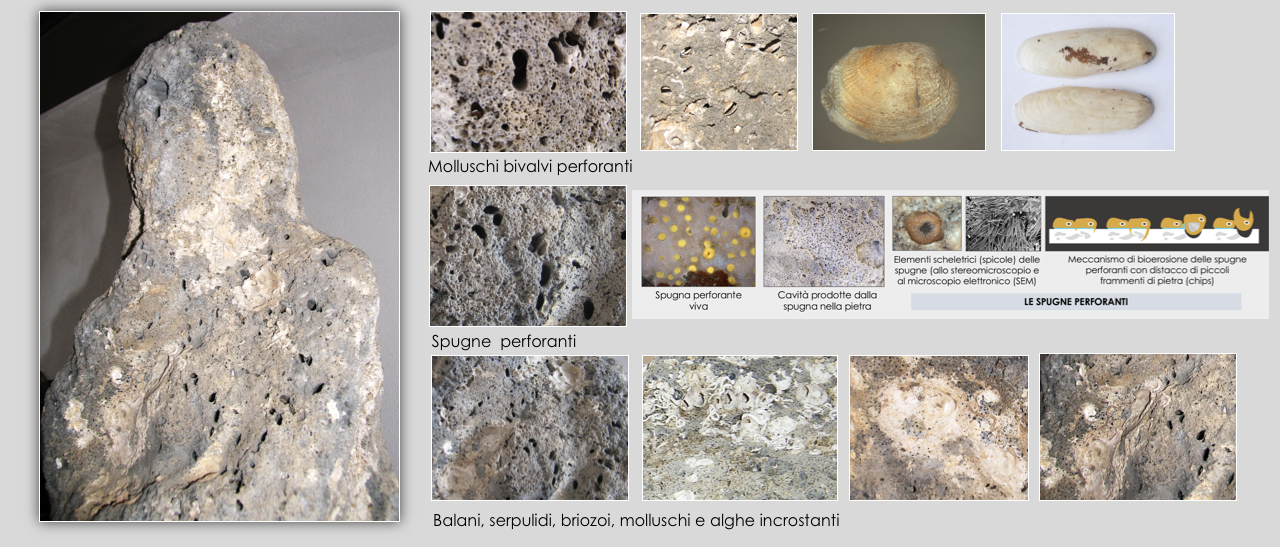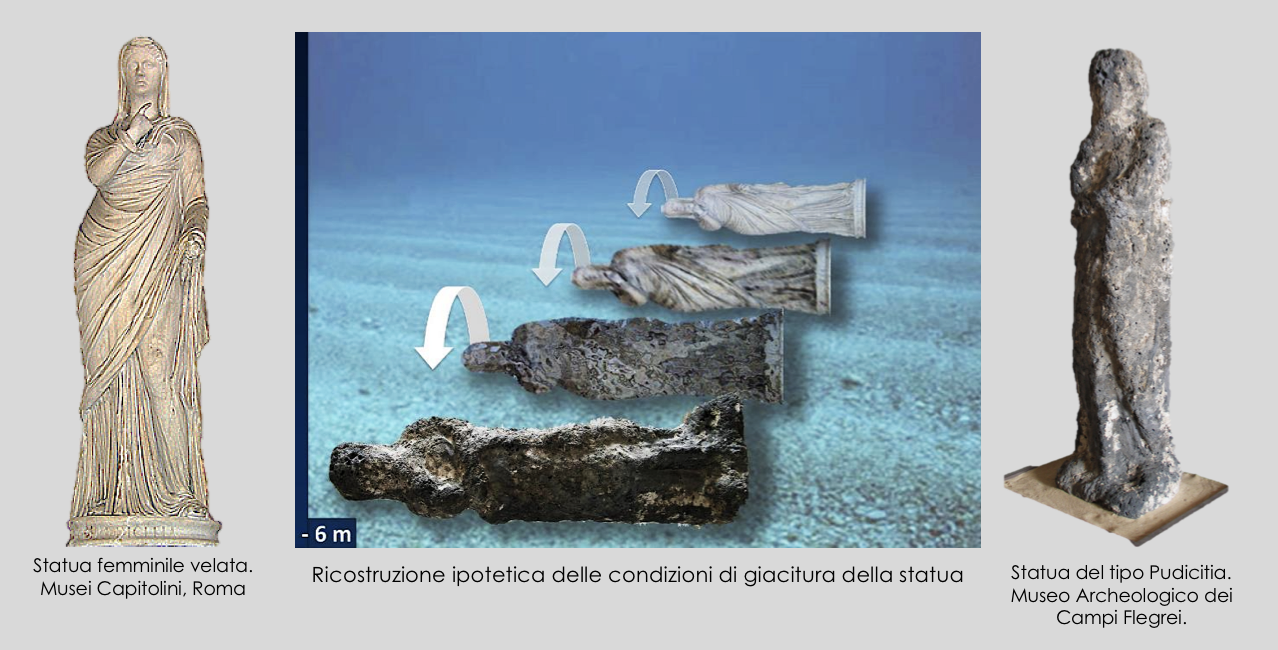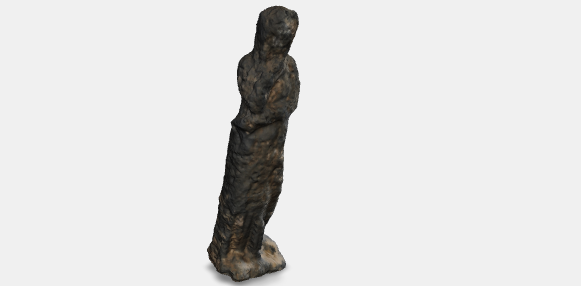The statue – a replica made in Puteoli in the Imperial Age, found in the waters of the port of Pozzuoli in 1972 – represented a woman with a veiled head in the act of covering her womb and chest with her arms; it was a well-known image of Pudicitia (Demureness), a personification of one of the virtues of Roman women.
As the statue stood uncovered on the seabed for a long time, the activity of marine organisms heavily compromised the reading of the statue’s features.
The statue is heavily degraded and lost a great part of its sculptural plasticity due to a considerable bioerosion and abrasive action of the sediment. The morphology of the degradation, widespread on the entire surface of the artefact, allows for confirming that the statue remained uncovered for a long time, often changing its position due to the waves.
The following image illustrates the dynamics of the degradation, based on an intact statue of the same typology.
The surface shows widespread signs of fouling of a whitish colour caused by the epilithic development of benthic fouling organisms. Still well conserved remains of Thoracica (barnacles), Serpulidae (sea worms), Bryozoans, molluscs and thalli of encrusting red algae may be identified. The most evident signs of degradation are the ones produced by boring sponges that colonised the entire surface of the statue, whose presence is highlighted by circular perforations and sub-globular cavities, often confluent with each other. The element of particular importance is the widespread presence of holes due to the action of bivalve molluscs, with ovoid or 8-shaped holes of various dimensions up to 2 cm. In many cases, the shells of bivalves are still present inside the holes. Three species have been identified on this statue: Lithophaga lithophaga, Rocellaria dubia, and Petricola lithophaga.


Davidde B., Ricci S., Poggi D., Bartolini M., 2010. Marine bioerosion of stone artefacts preserved in the Museo Archeologico dei Campi Flegrei in the Castle of Baia (Naples), Archaeologia Maritima Mediterranea; 7: 75-115.
Demma, F. (2010) ‘Scultori, redemptores, marmorarii ed officinae nella Puteoli romana. Fonti storiche ed archeologiche per lo studio del problema’, Mélanges de l’Ecole française de Rome. Antiquité, 122(2), pp. 399–425.
Ricci S., Sacco Perasso C., Antonelli, F., Davidde Petriaggi B., 2015. Marine Bivalves colonizing roman artefacts recovered in the Gulf of Pozzuoli and in the Blue Grotto in Capri (Naples, Italy): boring and nestling species. International Biodeterioration & Biodegradation (98) 89 – 100.
Ricci, S., Pietrini, A. M., Bartolini, M., Sacco Perasso, C., 2013. Role of the microboring marine organisms in the deterioration of archaeological submerged lapideous artifacts (Baia, Naples, Italy). International Biodeterioration & Biodegradation 82 (2013) 199-206.
Ricci S., Davidde B., Bartolini M., Priori G. F., 2009. Bioerosion of lapideous objects found in the underwater archaeological site of Baia (Naples). Archaeologia Maritima Mediterranea, 6: 167-188.
Zevi F. (cur.) 2009, Museo archeologico dei Campi Flegrei. Castello di Baia. Napoli: Electa Napoli, vol. 2, p. 56.



